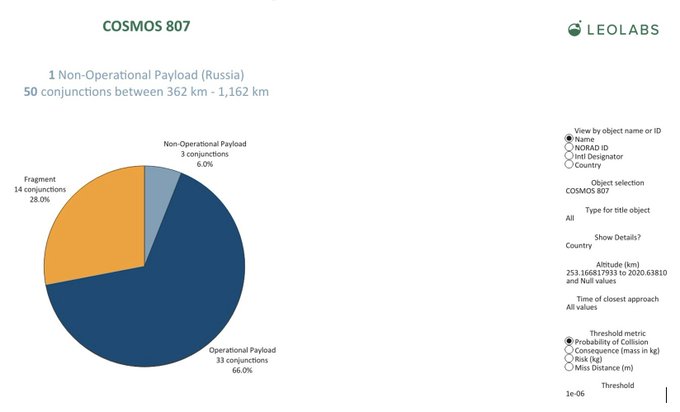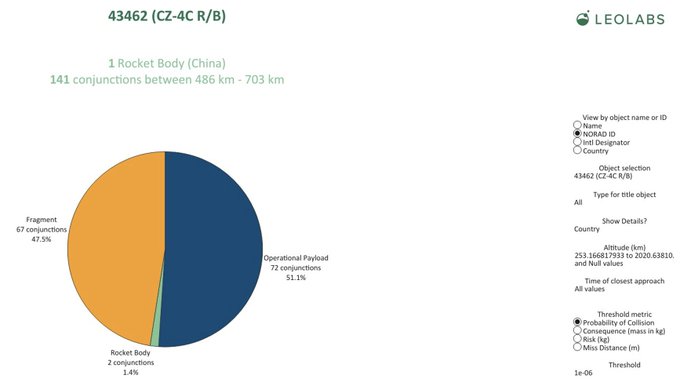6/ How do we know all this?
We use our analytic tool, LeoMap, to determine dangerous orbits and objects by consolidating historical conjunction information. Our comprehensive dataset enables this unique capability.
1
1
91
Replies
⚠️ On Sept 13, a derelict Soviet-era payload had a conjunction with a Chinese rocket body.
The miss distance was 36 m (± 13 m) and the probability of collision was 1E-3 (i.e., 0.1% or 1/1,000).
While we've seen more nail biting events, this one is notable — here's why.
24
251
1K
1/ Cosmos 807 and CZ-4C had a combined hard body radius (HBR) of 5.6 m. This contributed to the relatively large probability of collision (PC) value.
If these two objects had collided, the number of resulting cataloged fragments would have likely been ~3,000. 🤯
3
7
163
2 / To put that into perspective, the 2021 Russian ASAT test resulted in ~1,800 total cataloged fragments over time.
1
1
120
3/ 🛰️ A closer look at Cosmos 807:
This 400 kg payload was launched into an elliptical orbit in 1976. It's likely Cosmos 807 has had many close encounters with other objects over time...
And we've observed quite a few of them.
1
0
116
4/ In the last 20 months, we've observed 50 high-PC (i.e., PC > 1E-6) conjunctions involving Cosmos 807.
While the majority were with operational payloads, 14 included fragments — 6 of which were from the fragment cloud generated after Russia's 2021 ASAT test.
1
0
115
5/ 🚀 A closer look at CZ-4C:
This 2,000 kg rocket body was abandoned five years ago — and it's already been involved in 141 high-PC conjunctions, split almost equally between fragments and operational payloads.
1
1
90
7/ 💁♂️ What's the point?
This event illustrates an emerging trend of “old” and "new" derelict objects mixing.
This is contributing to concerns about the inevitable massive-on-massive collision that will likely produce 1000s of fragments, posing a risk to
#satellites
we rely on.
2
4
107


